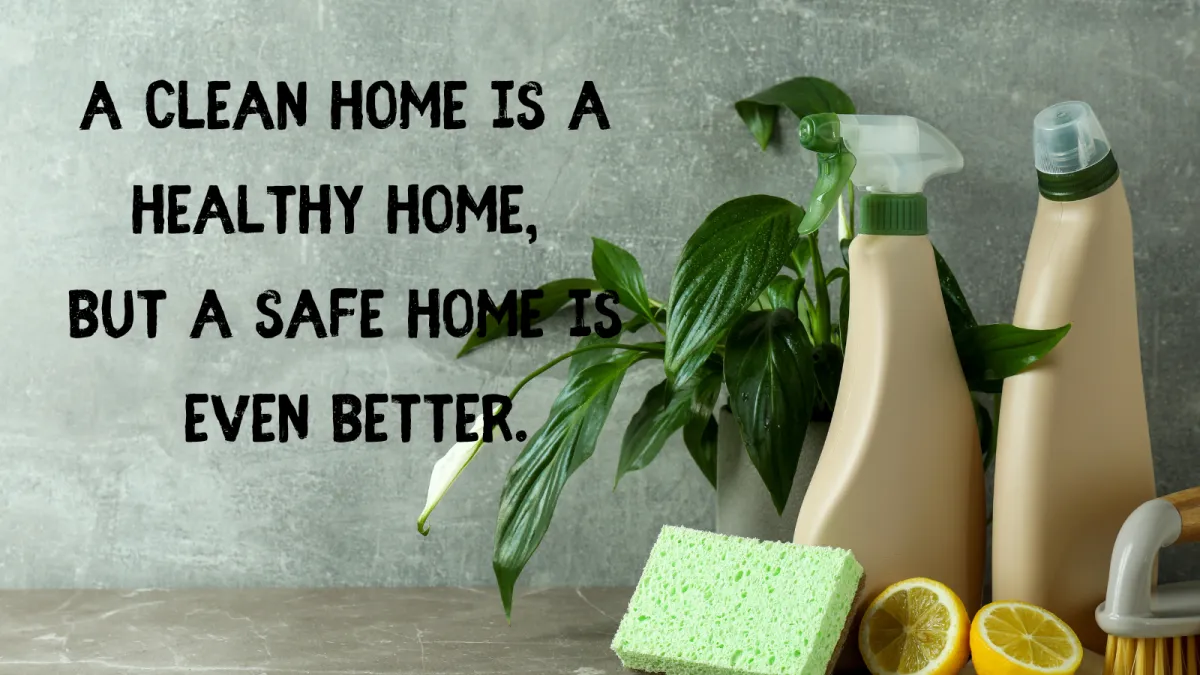
Understanding Cleaning Chemicals: A Quick Guide
Understanding Cleaning Chemicals: A Quick Guide
Ever wonder what’s really inside your cleaning products? Understanding cleaning chemicals can help you make informed choices and ensure you’re using them safely and effectively. Here’s a breakdown of five common cleaning agents, their ingredients, and how to use them best.
1. Soaps and Detergents
Main Ingredient: Surfactants (such as Sodium Lauryl Sulfate)
How They Work: Surfactants break down grease, oils, and dirt by reducing the surface tension between water and dirt, allowing grime to be rinsed away easily.
Best Uses: Dish soaps, laundry detergents, and all-purpose cleaners are great for everyday cleaning of dishes, clothing, and countertops.
How to Use: Mix with warm water for general cleaning tasks. For tough stains, allow the detergent to sit for a few minutes before scrubbing.
Safety Tip: While generally safe, avoid overuse of detergents as residues can build up, and always rinse surfaces thoroughly.
2. Bleach (Sodium Hypochlorite)
Main Ingredient: Sodium Hypochlorite
How It Works: Bleach is a powerful disinfectant that kills bacteria, viruses, and fungi by breaking down proteins and eliminating germs on contact.
Best Uses: Disinfecting kitchen surfaces, bathroom tiles, and laundry whites. Bleach is effective for sanitizing high-touch areas like doorknobs and light switches.
How to Use: Dilute bleach with water for surface cleaning (typically 1 cup of bleach per gallon of water). Let it sit for a few minutes to disinfect before rinsing thoroughly.
Safety Tip: Never mix bleach with ammonia or acidic cleaners like vinegar—this can release harmful, toxic fumes. Always use in a well-ventilated area and wear gloves to avoid skin irritation.
3. Vinegar (Acetic Acid)
Main Ingredient: Acetic Acid
How It Works: Vinegar’s acidity dissolves dirt, grime, and mineral deposits like limescale. It’s also effective as a natural deodorizer.
Best Uses: Cleaning windows, countertops, kitchen appliances, and floors. Vinegar is excellent for removing hard water stains and soap scum.
How to Use: For everyday cleaning, dilute vinegar with equal parts water. For tougher jobs (like limescale or soap scum), use vinegar directly on the surface and let it sit before scrubbing.
Safety Tip: Avoid using vinegar on natural stone surfaces like marble or granite, as the acid can etch the stone. Rinse thoroughly to prevent damage.
4. Baking Soda (Sodium Bicarbonate)
Main Ingredient: Sodium Bicarbonate
How It Works: Baking soda is a mild abrasive that helps physically scrub away tough stains, grease, and dirt. It also neutralizes odors by balancing pH levels.
Best Uses: Cleaning ovens, sinks, and countertops; deodorizing carpets, fridges, and trash bins.
How to Use: For scrubbing, sprinkle baking soda directly onto surfaces or mix with water to form a paste. For deodorizing, place a box in the fridge or sprinkle onto carpets before vacuuming.
Safety Tip: Baking soda is safe to use on most surfaces, but always test on a small area first to avoid scratches.
5. Hydrogen Peroxide (H2O2)
Main Ingredient: Hydrogen Peroxide
How It Works: Hydrogen peroxide is an oxygen-based disinfectant that kills bacteria and viruses by releasing oxygen molecules, which break down cell walls.
Best Uses: Disinfecting countertops, cutting boards, and bathrooms; cleaning mold or mildew; whitening grout.
How to Use: Use hydrogen peroxide at a 3% concentration directly on surfaces. For best results, let it sit for 10 minutes before wiping away.
Safety Tip: Hydrogen peroxide is generally safe but can cause discoloration on fabrics and some surfaces, so always spot-test before use.

Best Practice for Safe Chemical Use
Read Labels Carefully: Always follow instructions and warnings on product labels.
Wear Protective Gear: Use gloves and eye protection when handling strong chemicals.
Ventilate the Area: Ensure good airflow by opening windows or using fans.
Store Safely: Keep all chemicals out of reach of children and pets.
Avoid Mixing Chemicals: Mixing chemicals like bleach and ammonia can produce toxic fumes.
Eco-Friendly Products: Consider using natural alternatives whenever possible
Conclusion
By understanding the ingredients in your cleaning products and how to use them correctly, you can maintain a clean, healthy environment at home while staying safe. Whether you’re using everyday items like baking soda or powerful disinfectants like bleach, knowing their properties and how they work will make your cleaning routine more effective and informed.
Need professional help? Contact Cleancation for all your cleaning needs. We offer a variety of services, including:
General Cleaning Services
House Cleaning Services
Residential Cleaning
Commercial Cleaning Services
Deep Cleaning
Eco-Friendly Cleaning
Maid Services
Janitorial Services
Office Cleaning
Realtors and Property Managers
Move-In/Move-Out Cleaning
Airbnb and Short-Term Rentals
Apartment Complexes
Green and Eco-Friendly Cleaning

Areas We Serve
Cleancation proudly serves the following areas in North and Central Jersey:
Boonton, Lake Hiawatha, Lincoln Park, Montville, Mountain Lakes, Parsippany, Pine Brook, Towaco, Butler, Jefferson Township, Pequannock, Pompton Plains, Riverdale, Dover, Mine Hill, Picatinny Arsenal, Budd Lake, Denville, Flanders, Hibernia, Ironia, Kenville, Landing, Ledgewood, Long Valley, Mount Arlington, Netcong, Randolph, Rockaway, Succasunna, Wharton, Brookside, Cedar Knolls, Chatham, Chester, Florham Park, Green Village, East Hanover, Madison, Mendham, Millington, Morris Plains, Morristown, New Vernon, Stirling, Whippany....and more!
